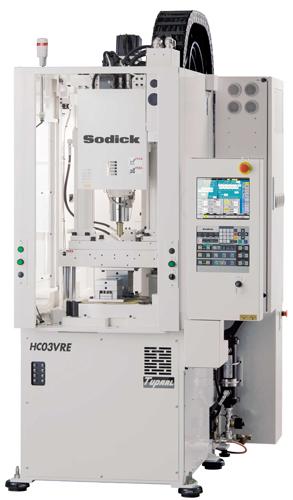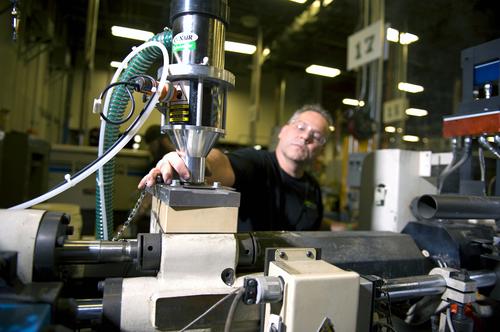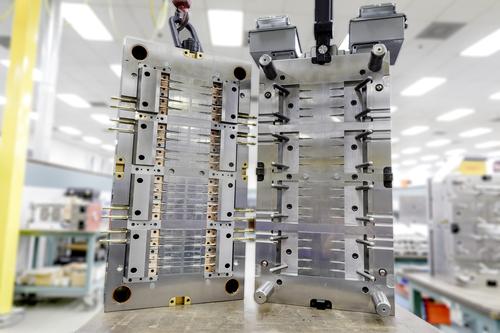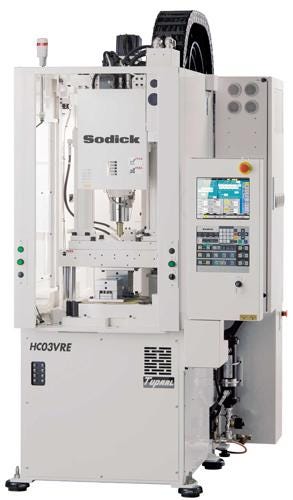September 15, 2015

Plastic, rubber, and metal injection molding and, more recently, rapid molding techniques have been major contributors in global manufacturing. A variety of processes and equipment can be used, depending on volumes, materials and turnaround time, and whether parts are prototypes or finished ones. The rise of rapid molding for fast delivery of high-mix, low-volume products and prototypes, and new ways to make molds such as 3D printing, are changing the way design engineers use injection molding in product development and production planning.
Dan Barsness, product manager for the Protomold service of fast-turn molding company Proto Labs said molding services can be classified into three different types: traditional high-volume molders; a broad group of lower-cost, high-volume molding services typically located offshore; and rapid molders, a more recent phenomenon.

Traditional molders are usually full-service suppliers. "They are all about injection molding tools that last forever, and about speeding up injection," he said. "They do a lot of value-add services like assembly or painting." Tooling used by these services tends to be made of hardened steel; hundreds of thousands to tens of millions of parts are made from multi-cavity production molds.
Rapid molding is newer, and something Proto Labs helped pioneer. It serves the need for making multiple variations of a single product in somewhat lower volumes -- 25 to 1,000 units instead of 100,000 or more, said Barsness. These products and all their components must be prototyped exactly, in all those variations, using exactly the materials they will be produced with.
The resulting increase in SKU proliferation is caused by several colliding trends. First, globalization has produced effects, as described by Barsness. "Say you make a household product or a communications device, and you want to sell it around the world," he said. "Your market used to be the US, but now there's the Chinese market and other countries, like Brazil. Customers in those countries have different values and tastes, whether it's a car or a thermostat." Those countries also have different regulations, such as those for safety, and different specifications, such as for electrical voltage, which effect part variations.
MORE FROM DESIGN NEWS: Proto Labs Offers Fast-Turn Optical Silicone
Trends related to energy and environmental friendliness are also driving changes in product designs. "Lightweighting is major, especially in anything that moves," said Barsness." Also, LEDs are being used everywhere for their ability to reduce the power, size, and cost of lighting, and they can be packaged almost any way imaginable. On many of these LED-enabled products, the entire assembly can include five to 10 different injection molded parts.
A third set of changes is due to increases in product connectivity and automation. The Internet of Things has engineers putting sensors on just about anything, from household appliances to industrial products. "Now the design engineer has to get 10 different prototypes of 10 different products for 10 different countries, all of them have LEDs, and they've all got to talk to the Internet," Barsness remarked. This is where rapid molding services come in.
Rapid molding tooling is typically "soft," represented by aluminum instead of steel, for a much lower cost. Rapid molding, of course, has a much faster turnaround. A traditional molder, using a high-volume production mold, could typically take a few months to deliver entire part runs, but the average rapid injection molder delivers parts in 25 to 45 days. Proto Labs' service promises one to 15 days.
Before rapid molding begins, prototypes are also made with production-grade materials. Typically, a customer sends three to five iterations of a design, and Proto Labs cuts a different mold each time. The industries Proto Labs serves tend to be those with some regulation or a high amount of product churn.
Barsness also said metal injection molding is booming, and Proto Labs recently introduced new low-alloy-steel options for prototypes and low-volume production parts: two nickel-steel materials -- Catamold FN02 and FN0205 -- and a chrome-moly material, Catamold 42CrMo4. These create metal parts that, when heat-treated, are wear-resistant and can be coated for further protection in post-processing. Aside from the firearms industry, other uses include components for automotive engines and transmissions and consumer goods such as power tools.
Lighting applications are driving a higher mix of heat-resistant materials, such as ABS, polycarbonate, and flame-retardant blends, as well as clears and opticals, said Barsness. In medical applications, there's been a change lately in some sterilization requirements, so Proto Labs is seeing customers working with a broader range of high-temperature materials. Proto Labs, though, is putting most of its innovation efforts into its production processes, such as automation around the CNC mill that makes the molds and around the injection press that makes the parts.
At the recent NPE2015 show in Orlando, several injection molding system suppliers introduced new technologies. Eastman Chemical Company collaborated with precision mold maker Prestige Mold Inc. in designing a 32-cavity, hot-runner mold for producing intricate medical parts that the companies say is the first of its kind. The mold was created for use with Eastman's Tritan copolyester, to address customer needs for durable medical device parts that can withstand sterilization and harsh chemicals and that are free of bisphenol A and S.

Plustech, Inc. introduced its HC03VRE Micro Vertical Molding Machine for high-speed molding of precision micro parts. This system achieves a dry cycle time of 0.9 seconds, using a single-motion, electrically driven, hybrid direct-pressure mold clamping system and a belt-driven table rotation. The HC03VRE also features a two-stage plunger system, from Japan-based parent company Sodick's V-LINE, which separates the injection and plasticization processes. This provides the consistent measurement and injection needed for molding miniature and micro-precision components.
Niigata Operations North America showcased two versions of its latest model, the S7000 all-electric injection molding machine. The vertical MDVR110S7000 has a two-station rotary table for running separate A and B mold halves. Independent injection profiles for each eliminate part variations and mismatch-caused mold repairs. This system also has a wider table than standard verticals at 500 x 500 mm (33.64 x 33.64 in) to accommodate larger molds, a table rotation time of under 1 second, and the ability to do ultra-low-speed injection of 0.01 mm/sec for molding jobs with thicker walled inserts. The MD110S7000, a horizontal machine, has fully automatic, adjustable mold clamping force that's continuously monitored by tie bar sensors.
MORE FROM DESIGN NEWS: 3D Printing Partners With Injection Molding At NPE 2015
3D printing, often considered competitive with injection molding, is now being used by several molding services, either for prototyping and direct manufacturing of end-use parts or speeding up the process of making injection molds. For example, Proto Labs got into the technology last year by purchasing a 3DP service bureau, while other injection molders have bought 3D printers. Full-service molder Linear Mold & Engineering uses 3D metal printing for making end-use parts as well as for making mold components with conformal cooling channels not feasible with machining.

Stratasys, a 3D printing technology leader, has published several case studies of customers using its machines for making injection molds. The Italian division of international consumer goods maker Unilever started making tooling used for molding prototypes in their final production materials with the Objet500 Connex multi-material 3D printing system. The resulting benefits have included a drop in lead times of 40% over traditional metal tool making methods and much faster design iterations that can be made to the mold in hours.
Another manufacturer reduced lead times for producing injection molds for making prototype parts by up to 97% -- in less than 24 hours versus four to five weeks -- using ABS materials and the Objet350 Connex. Whale, the company which makes water and heating systems for mobile applications, has cut mold costs dramatically from what it was incurring with metal tooling. The overall R&D process time has been cut by up to 35%, and design and product launch lead times have been cut by 20%.
Ann R. Thryft is senior technical editor, materials & assembly, for Design News. She's been writing about manufacturing- and electronics-related technologies for 25 years, covering manufacturing materials & processes, alternative energy, machine vision, and all kinds of communications.
About the Author(s)
You May Also Like



